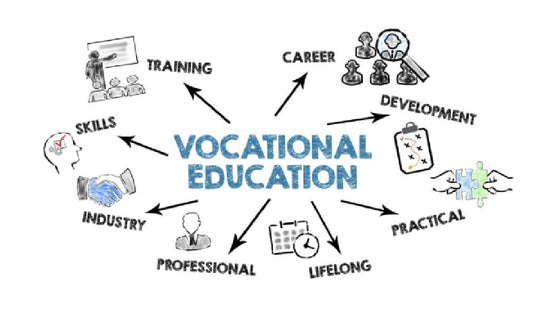The idea of capping international student numbers in Australia has recently gained attention amidst concerns over integrity issues, housing shortages, and migration policy. While proponents argue a cap would address these challenges, a closer examination reveals it is an unnecessary and detrimental policy that would damage Australia's education sector, economy, global reputation and societal goals. This article will outline the multitude of reasons why an international student cap is deeply misguided and counterproductive.
International Student Trends Post-COVID
Calls to limit international student numbers are based on a faulty premise - that Australia is experiencing an alarming surge in overseas enrolments. In reality, the recent uptick in student visa grants was a temporary post-COVID blip as global mobility resumed, not an ongoing trend. Department of Home Affairs data shows offshore student visa applications in March 2023 were already 17% lower than pre-pandemic levels in March 2019. Similarly, ABS data indicates that while education export income rebounded to $41.2 billion in 2021-22, this remained below the record $40.3 billion in 2019-20.
Current evidence points to international student numbers naturally moderating without intervention. Australia's share of globally mobile students actually declined from 8.8% in 2019 to 7.8% in 2021, according to UNESCO data. Meanwhile, competitor study destinations like Canada, the UK and US all saw market share gains over this period. With the initial post-COVID surge dissipating and intensifying competition abroad, artificial caps to restrict inbound students are simply unnecessary. Australia is better served by focusing on enhancing its global competitiveness to attract high-quality students.
Targeted Integrity Measures More Effective
Tackling integrity issues in international education, such as exploitative practices by some agents, providers and employers, is crucial for protecting students and upholding the sector's reputation. However, a blanket cap on student numbers is far too blunt a tool for this purpose. Recently strengthened measures are already proving more effective while avoiding the pitfalls of a cap.
In 2022, the government introduced the Education Legislation Amendment (Provider Integrity and Other Measures) Act to bolster TEQSA's and ASQA's regulatory powers. The legislation enables regulators to impose conditions on registrations, issue fines for non-compliance, and publicly name non-compliant providers. Since then, several providers have been forcibly deregistered or sanctioned for poor practices. Just this month, ASQA cancelled 4 providers' CRICOS registrations over academic misconduct.
The government has also cracked down on education agents, who play an outsized role recruiting students from key markets like China, India and Nepal. Dodgy agents who engage in false advertising or facilitate fraudulent visa applications are being weeded out through increased surveillance and enforcement. In April, the government revoked 400 agent licenses following integrity checks. New regulations are being developed to raise professional standards, including a requirement to hold an Australian business number and meet fit and proper person tests.
For the workplace, the government has made exploitation of migrant workers, including students, a key priority for the Fair Work Ombudsman. The watchdog conducted over 1000 investigations into businesses employing students last financial year, recovering $1.6 million in unpaid wages. Maximum fines for serious contraventions like underpayment and unsafe working conditions are also being hiked. Furthermore, a new mechanism to ban employers who egregiously breach workplace laws is under development.
By enforcing higher standards for education providers and agents while cracking down on unethical employers, the government is systemically tackling integrity issues at their roots. Conversely, an arbitrary cap on overall student numbers fails to differentiate between high quality and unscrupulous operators. Ironically, it would undermine efforts to improve integrity and quality by diverting resources to cap enforcement and distorting provider incentives.
Existing Controls on Student Numbers and Quality
Calls for an additional cap on international students overlook the fact that multiple existing safeguards already prevent unchecked growth. Every institution enrolling overseas students must be registered with the Commonwealth Register of Institutions and Courses for Overseas Students (CRICOS). As part of this registration, providers must demonstrate their facilities and resources are sufficient for their projected student numbers. Providers must set a maximum approved capacity for overseas students they can enrol, acting as a de facto cap tailored to each provider's individual circumstances.
CRICOS registration also involves meeting stringent quality standards. Providers must align their programs with national qualification frameworks, ensure teaching staff have appropriate qualifications, provide suitable learning resources and facilities, monitor student attendance and progress, and meet student support and welfare requirements. Institutions that fall short of expectations can be sanctioned or deregistered, as demonstrated by TEQSA's and ASQA's recent enforcement activities.
At the course level, each qualification on CRICOS has an accreditation expiry date up to 7 years for universities and 5 years for VET courses. Providers must apply to renew accreditation before expiry, allowing regulators to periodically reassess course quality and resources. This ensures providers maintain standards over time, regardless of any growth in student numbers.
These multi-layered controls render an additional cap unnecessary. By tailoring student numbers and quality oversight to each provider's unique circumstances, they are far better targeted than a one-size-fits-all cap. Policymakers would do better to refine and properly resource this existing framework than to impose a redundant cap that only adds more red tape.
Risks Undermining Skilled Migration Review
Concurrent to the cap debate, the government is undertaking a comprehensive review of the skilled migration points system, with particular focus on international students. Consultation documents acknowledge that point allocations significantly influence international student course selection and study location decisions. Key proposals include changing points for studying in regional areas, awarding points for Australian and overseas work experience, and allocating points by ANZSCO occupation.
An international student cap would work at cross-purposes to this nuanced effort to refine skilled migration settings. Under a cap, providers may be forced to curtail offerings in areas of skill shortage to comply with limits, even if student demand and migration settings favour those fields. This could lead to paradoxical outcomes where in-demand programs fill up prior to each intake due to the cap, while out-of-favour courses struggle to meet enrolment targets.
Furthermore, the ongoing policy uncertainty created by a cap would undermine Australia's attractiveness as a study destination for students motivated by migration. If prospective applicants cannot be confident their preferred course will be available under the cap by the time they apply, they may opt for destinations with more transparent and predictable migration pathways like Canada or the UK. Such a brain drain runs counter to the government's objective of supplementing skill supply through student migration.
It would be far more coherent to address any concerns about student flows through tailored refinements to migration settings rather than a separate cap mechanism. This would provide integrated policy signals for providers and students, supporting more efficient skill matching. The skilled migration review is the proper avenue for considering how student visa settings interact with labour market needs, not an arbitrary cap lacking any skills focus.
Australia's International Education Brand at Risk
Australia's blunt and inconsistent handling of international students during the pandemic already damaged the sector's global reputation. In 2020, the Prime Minister infamously told students to "return to their home countries" as borders closed before urging them to return months later to address skill shortages. Several commentators noted Australia was treating students merely as economic units to be discarded when no longer needed.
A student cap would only further bruise Australia's image as a welcoming destination of choice for international education. It sends a message that students are only welcome under strict government quotas, not based on their individual merits and aspirations. Applicants who have their enrolment plans derailed by the cap will undoubtedly share their negative experiences with peers back home, damaging Australia's word-of-mouth referrals.
From a higher education policy perspective, a cap suggests a troubling erosion of university autonomy. By preventing institutions from setting their own enrolment levels based on capacity and demand, it represents regulatory overreach more akin to a command economy than a market-based system. This risks stifling the dynamism and innovation that makes Australian education renowned globally.
Nor would damage be limited to the education sector's reputation. The Department of Foreign Affairs and Trade notes that international education is a crucial pillar of Australia's soft power and global engagement. Students who study here develop lasting personal connections and affinity for Australia. A cap limiting this people-to-people diplomacy would harm Australia's strategic objectives and relationships in key regions like Southeast Asia and the Pacific.
With international education already facing stiff competition from traditional contenders like the US and UK, as well as emerging regional hubs like Singapore and Malaysia, Australia can ill afford further reputational damage. Rebuilding trust with international students and overseas partners should be the priority, not an antagonistic cap that treats students as a liability to be managed.
Limited Impact on Housing Affordability
One of the most emotive arguments advanced by cap proponents is that international students are a key driver of rental price increases and housing shortages. However, the evidence shows the vast majority of students are not competing for the same housing stock as locals and that dwelling unaffordability is primarily due to broader market forces.
According to the 2021 Australian Student Accommodation Annual Report, almost 70% of international higher education students live in purpose-built student accommodation (PBSA), commercial or non-profit student housing—only around 10% rent in the wider private rental market, usually in groups that share facilities. The PBSA market grew 39% between 2018 and 2022, with 110,809 beds catering for the over 600,000 international students enrolled annually pre-pandemic.
While COVID-19 temporarily increased vacancies in inner city student rentals, industry data shows the pipeline of new PBSA developments have largely absorbed the recent rebound in students. Despite isolated media reports of overcrowding in some private rentals, PBSA vacancy rates in most capital cities are above pre-pandemic levels – reaching 13% in Sydney and 9% in Melbourne.
Student housing industry leaders contend the sector has ample capacity to meet future demand. In 2022, major providers like Scape and UniLodge announced plans to deliver over 5,000 PBSA beds across Sydney, Melbourne, Brisbane and Adelaide in the next 3 years, while investors like Nesuto plan to grow their national property portfolio by 50%. Continued investment in accommodation options tailored for international students will help lessen any wider rental market impact.
More fundamentally, housing experts argue that record-low rental vacancy rates and skyrocketing rents are predominantly driven by domestic demographic shifts and supply shortfalls, not international students. Returning expats, rising interstate migration and the booming short-term holiday rental market are soaking up private rental stock. Meanwhile, dwelling completions fell to 4-year lows in 2022 and rental dwelling commencements were 35% below the 5-year average.
With multiple analyses from the RBA, NHFIC and the Property Council concluding over 1 million additional homes are needed by 2032 to reach affordability equilibrium, capping student numbers would make a negligible dent. International students are far from the crux of a long-term structural problem.
Conversely, an international student cap risks exacerbating housing unaffordability by discouraging PBSA investment. If developers face ongoing uncertainty about student enrolments due to changing cap settings, they will be less likely to commit to new projects. As seen during the pandemic, this would force more students into the private rental market as competitors with locals.
For sustainable rental affordability, governments should instead focus on clearing planning bottlenecks, reforming tax settings, and directly investing in social and affordable housing for vulnerable groups. Politically expedient attempts to scapegoat international students will do little to address the underlying drivers of the crisis.
Skill Needs and Economic Contribution
The notion that most international students seek to stay permanently, burdening infrastructure and services, is not supported by the facts. Department of Home Affairs data shows the majority of students do not transition to permanent residency. In 2021-22, only 16% of permanent skilled visas were granted to former student visa holders, while just 5,534 of the 88,979 graduating students applied for the temporary graduate (485) visa by September 2022.
Nevertheless, the minority of students who do stay play a critical role addressing skill shortages in key industries. In 2022, international education graduates made up 35% of skilled migrant engineers, 22% of ICT professionals, and 15% of health professionals – fields with persistent vacancies. The Australian Chamber of Commerce argues post-study work rights help attract top global talent, with international students filling "persistent skills shortages in critical areas" like tech and advanced manufacturing.
For example, 54.5% of graduating international IT students gain skilled employment within six months, the second highest rate of any field after medicine. Consultations for Jobs and Skills Australia's inaugural skills priority list also highlighted how extended post-study work rights introduced in 2022 are "important to attract international students" to in-demand fields with significant skill gaps.
Overall, the Reserve Bank of Australia calculates that a 1 percentage point increase in the migrants' share of the adult population raises GDP per person by 0.12%. Access Economics estimates halving migration would cost every Australian $1,500 per year by 2050 through lower living standards, productivity and government revenue. This is the scale of economic impact a student cap would undermine.
Even international students who return home deliver lasting economic dividends for Australia. The 2021 International Graduate Outcomes Survey shows 3 in 5 offshore alumni have ongoing research and business links with Australia, while 9% started a company in their home country after graduation. Meanwhile, 58% believe their Australian qualification gives them a competitive employment edge. Their Australian-forged connections and esteem generate long-term soft power and trade benefits.
Reflecting this, the government's new strategy for international education to 2030 emphasises the sector's role in supporting "Australia's productivity and global engagement" by "fostering business opportunities." A cap reducing talent inflows undermines this agenda.
Any short-term savings from fewer students using infrastructure and amenities must be weighed against the long-term costs to Australia's skills base and economic dynamism. Policymakers cannot credibly bemoan skill shortages and productivity challenges while pursuing policies that constrain access to human capital. Targeted approaches to managing specific infrastructure bottlenecks are more prudent than depressing Australia's overall skill pipeline.
Quality and Resourcing Challenges
While concerns about quality and resourcing strains in the international education sector are valid, an enrolment cap does nothing to address their root causes. If anything, arbitrarily restricting student numbers would exacerbate financial pressures on institutions to cut corners on teaching and support services.
Government funding for higher education has declined 10.4% in real terms since 2008, according to the 2022 Universities Australia Finance Report. Universities are increasingly cross-subsidising research and capital works from international student fees to make up shortfalls. The Productivity Commission notes the growing gap between domestic bachelor funding and delivery costs incentivises "growth in high-margin international student enrolments."
A crude cap on international students would abruptly curtail this implicit subsidy without resolving underlying funding sustainability issues. The sudden loss of revenue could force cost-cutting measures like casualisation of teaching, larger class sizes and reduced student services. Regional and outer metropolitan institutions with smaller operating margins would be hit hardest. Some may be tipped into financial unviability.
Nor would rationing student places inherently raise entry standards. Under a hard cap, institutions may be tempted to enrol students faster to secure quota places before competitors, weakening verification and screening processes. Reduced diversity within a smaller student intake could also weaken peer learning and campus life programs. Moreover, the lucrative market for high volume, lower quality diploma mill courses would likely just shift to offshore online delivery under a cap.
Blunt enrolment restrictions cannot substitute for proper regulatory oversight and quality assurance regimes. TEQSA and ASQA's enhanced enforcement powers are far better targeted to weed out underperforming providers and courses. So too are the revised Higher Education Standards Framework and recent increases to the Higher Education Participation and Partnerships Program (HEPPP) for student equity initiatives.
Alongside this, government and industry should work collaboratively to develop sustainable funding compacts. These could include greater public investment in research and infrastructure, reform of domestic student contributions and performance-based funding, and joint initiatives to diversify revenue like commercialisation and philanthropy.
Fundamentally, attempting to regulate quality by controlling student quantity puts the cart before the horse. A holistic focus on strengthening institutional baselines and strategic resourcing is essential to ensure international education flourishes without compromising standards for any student.
Regulatory Burden and Unintended Consequences
Perhaps the most troubling aspect of the student cap push is the lack of detail on how such a far-reaching intervention would be designed and administered. A cap is easy to announce in principle, but fiendishly complex to implement and enforce in practice without severe unintended consequences.
Obvious questions abound. Would caps be set nationally, regionally, by institution, by sector or by course level? On what basis would initial quotas be set and adjusted over time? How would caps account for underlying student demand and demographic change? What checks would prevent gaming and perverse incentives? Who would be responsible for monitoring compliance and breaches?
Canadian researchers have documented how the inability to coherently answer such questions undermined that country's own experiment with international student restrictions in the early 2000s. Basing provincial quotas on historical enrolment shares locked in discrepancies, while using growth bands to adjust quotas created a use-it-or-lose-it rush to fill places. Institutions devoted resources to competing for quota rather than investing in quality.
Similar risks abound for any Australian cap. A national cap ignores provider diversity, with the same limits applying to small regional institutes and large urban universities. But a variable system of institutional caps requires controversial judgements about how to allocate quotas. Should larger or more prestigious universities get higher caps than smaller or regional ones? Would quotas be tradeable between providers? These distributional choices are a minefield.
Exemptions for certain courses or scholarship holders, as proposed by some, would be even more distortionary. Student choices would be driven by arbitrary carve-outs rather than pedagogical fit. Scholarships and industry partnerships could be gamed as quota loopholes. Paradoxically, exemptions could see more students pushed into sensitive fields like IT and engineering that have been the focus of security concerns.
Nor is it clear what data and systems would be used to track and enforce caps in real-time. Currently, student numbers are reported through a patchwork of PRISMS, HEIMS and provider data that can lag months behind enrolments. If a provider accidentally or deliberately exceeds its quota, would already-enrolled students be unenrolled and deported? Such a scenario would cause immense harm to students and amplify integrity issues.
Moreover, a cap would create burdensome new compliance obligations and costs for providers and government. Modelling enrolment pipelines, adjusting recruitment, rationing places and reporting numbers against caps would consume significant administrative resources. Government would need to expand headcount for processing data, investigating anomalies and enforcing penalties. Costs would likely be passed onto students via higher fees.
Even then, a cap would remain vulnerable to evasion and arbitrage. Shady operators could flout limits through online offerings, subcontracting arrangements and offshore branch campuses beyond Australia's regulatory reach. It could also reignite problems with fraudulent admissions and visa applications as students scramble to secure places. Like any blunt restriction, a cap would incentivise manipulative behaviour to get around it.
Meanwhile, genuine providers and students would face ongoing uncertainty. Frequent adjustments or exemptions to cap settings would undermine stability for long-term planning and partnerships. Pipeline visibility for everything from academic hiring to capital investments would be compromised. Rebuilding institutional profiles and market positioning after COVID-19 would become even more fraught.
All these distortionary impacts raise doubts that caps are an effective or efficient way to achieve desired policy outcomes. At best, they are a costly band-aid to gloss over complex structural tensions. At worst, they risk creating a hydra of new ills that dwarf any intended benefits. Policymakers should be wary of simplistic silver bullets that underestimate the nuances of Australia's international education ecosystem.
Conclusion
As this analysis demonstrates, capping international student numbers is a misguided and counterproductive policy. Contrary to proponents' claims:
- International student numbers are already self-moderating post-COVID without intervention
- Recently strengthened integrity measures are better targeted to weed out misconduct
- Existing controls on provider capacity and quality negate the need for a redundant cap
- A cap would clash with concurrent efforts to refine skilled migration and global talent attraction
- Australia's fragile international education brand can ill afford further reputational damage
- International students are peripheral to structural housing affordability and rental challenges
- Lasting economic and skills contributions outweigh short-term savings from a cap
- Arbitrarily restricting students exacerbates sector underfunding and incentives to cut corners
- Cap design and enforcement would be a regulatory quagmire rife with unintended consequences
Instead of a reflexive cap, policymakers should stay the course on targeted reforms to strengthen provider standards, migration settings, and housing supply drivers. Transparent funding compacts for sustainable investment in teaching and research quality are also critical to reducing reliance on cross-subsidies. Fostering a stable regulatory environment for institutional planning and partnerships should be prioritised to cement Australia's global competitiveness.
It is vital that this nuanced approach be clearly communicated and consulted on with students, providers, business and foreign partners to rebuild trust. A cooperative roadmap to position international education for long-term success within the bounds of community confidence is essential. Cooperative dialogue, not divisive caps, should guide the path forward.
International education remains an essential vehicle for Australia's economic vitality, skills development, research innovation and global engagement. Demand is not infinite, but nor should Australia turn its back on the immense opportunities the sector provides. With the right policy settings that balance quality and integrity, international education can continue to enrich Australia's campuses, communities and regional connections for decades to come.


































